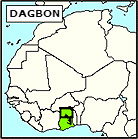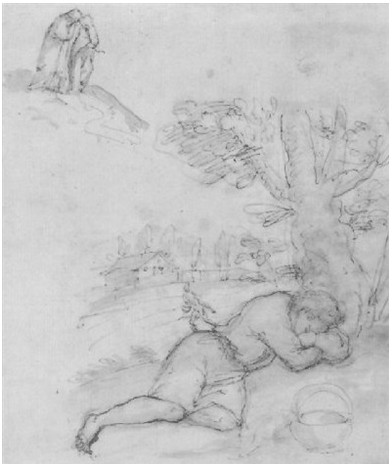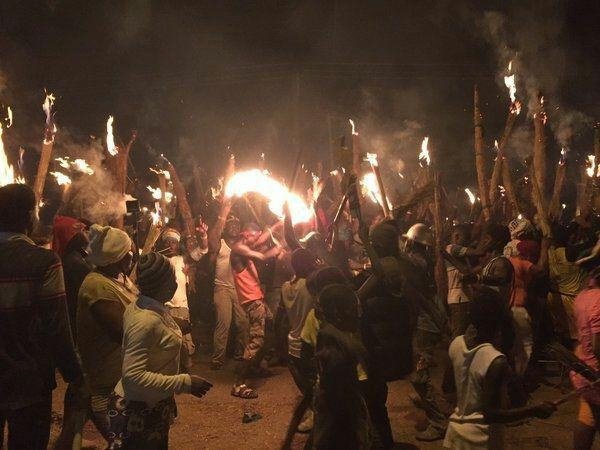Festivals are an important and integral part of most communities especially in Ghana. Festivals are celebrated in these communities to commemorate past historic events, to give thanks to the gods of the land for good harvests and also to purify the land and the people. Let's not forget that festivals are celebrated as a mode of transmission of cultures from generation to generation.
Personally, I haven't witnessed much of festivals except festivals of my own tribe, Dagbon. The Dagbon people are one of the oldest settlers in current Ghana. The Dagbon ethnic group consist of the Mamprusi, Dagomba and Nanumba sub-groups.
Many festivals are celebrated among the Dagbon people. The Damba festival, The Fire Festival "Bugum Chugu", "Chimsi Chugu" and "Konyuri Chugu" are all celebrated to mark important events in history. All these festival are occasions I enjoy very much but I would like to share only my experience of the Bugum Chugu literally meaning The Fire Festival.
HOW IT ALL BEGAN
Many years ago lived a king of the Dagbon Kingdom, whose name has been lost in history, who had a particular son he loved very dearly. It was said that the son went out to play with his friends and after some time he laid down under a tree and fell asleep. The other children without noticing him went home when it was getting dark. At the palace during the whole time, the king thought maybe the child was with his mother, the queen. In the same vain, the queen thought that maybe the child was with the king. I was until after supper that the they realized that son was missing.
The King gathered his "Sapashinnima" literally meaning warriors to go out and search for his son because he couldn't find him. The whole village followed after the warriors who were also following after the king. It was after supper, meaning it was at night and so they all lit pieces of torches to illuminate their way and they searched for the boy.
Eventually, the boy was found under the tree where slumber overtook him. Then the King decreed that the tree was an evil tree and he threw his torch at the tree and the rest of his follower did same.
The above extract is what is believed to be the origin of the festival. Others argue that the root of the festival stems from an islamic origin. And associate it with prophet Noah but this is not regarded to be true because the Dagbon people are not descendants of arabs.
HOW IT IS CELEBRATED
The "Bugum Chugu" is celebrated on the tenth day of the "Bugum goli" which corresponds to the first month of the lunar year in the Dagbon tradition. The celebration starts on the eve of the festival, the ninth day. On this particular day, it is a taboo do any work other than essential ones such as fetching water, grounding of flour and preparation of meat. The festival is celebrated with torches thus young boys go into the bush and they put together pieces of long straws of dried grass and bind them together to make the torches. On the evening of this day, the people prepare food and the soup they cook on this particular day as well as the nights of most festivals is called puhuga( Tamaridus Indica). During the festive season the people of Dagbon greet each other "Ni ti yuun palli" meaning and our new year.
The festival itself is celebrated on the night of the tenth day after supper. During supper the people cut morsels of food and pieces of meat and keep them on the walls of their house. This act means that the people are inviting the spirit of their ancestors and their gods. Everybody gathers at the chief's palace. The chief is the first to lit his torch and accompanied by the "wulaannima" meaning elders and the rest of the people behind them and he throws his torch at the tree and then he goes back to this palace. The rest of the people also light their torches after that, the beat the "gongong" drums and they dance "Ziem" as they also move along to the tree. They throw their torches at the evil tree as well and they continue their dancing of "Ziem" into the night. "Ziem" is a dance of the people of Dagbon. It is a dance for "sapashinnima" meaning warriros when they are going for war. "Ziem" is also played when the people are doing communal labor.
I already mentioned that with torches made from long straw of grass. Other tools they use in the celebration of this festival are cutlasses, guns and any other farming tool. These tools are meant to show a sense of the people searching through the bushes which stems from the original story. The people will dress like warriors to signify the warriors the chief assembled for the search.
I would like to put an end to my account of the "Bugum Chugu" here. I wish to thank @silencewan for giving me this opportunity to reminisce my experiences of the Bugum Chugu. I also extend my greetings to @farhmade and @pandev for introducing me to the steemit community. I hope you enjoyed this wonderful piece and I look forward to winning this contest as well.
_locator_map.png)



Well done. Your article contains all necessary information about the fire festival. Also, you have shown proof or reading making less mistakes in your summary. Thanks for sharing with us. Well done.
Downvoting a post can decrease pending rewards and make it less visible. Common reasons:
Submit
Thanks for considering my post
I look forward to engaging you in your subsequent contests
Downvoting a post can decrease pending rewards and make it less visible. Common reasons:
Submit
“This post has been rewarded by @oppongk from @steemcurator04 Account with support from the Steem Community Curation Project."
Keep posting good content and follow @steemitblog for more updates!
Downvoting a post can decrease pending rewards and make it less visible. Common reasons:
Submit
culture is indeed everything
Downvoting a post can decrease pending rewards and make it less visible. Common reasons:
Submit